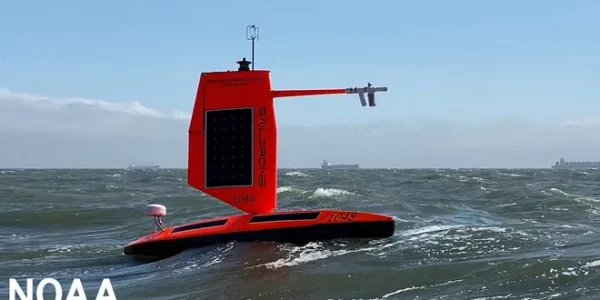Hurricanes are called natural disasters for good reason. They’re getting worse, too, with more and stronger hurricanes every year powered by rising ocean temperatures. Climate scientists need more information on these superstorms to respond to them and help save lives and homes. But getting more information is tough. It’s not practical to step outside and take pictures or measurements of a hurricane. Robots to the rescue! Specifically, robot surfboards to the rescue.
Robot surfboards are properly called “saildrones,” with a nod to drones that fly and to the concept of sailing. They look like surfboards, though, and they are unmanned, controlled remotely by sail drone pilots. Environmentally responsible autonomous oceangoing vehicles can collect data during a hurricane and bring it home to scientists who can analyze the data in the safety of their labs.
Sensors
Five saildrones took video of a Category 4 hurricane, Hurricane Sam, in 2021. They measured a wide range of factors:
- air temperature
- relative humidity
- barometric pressure
- wind speed and direction
- water temperature
- water salinity
- ea surface temperature
- wave height and period
The sail drones sent the data back to NOAA scientists, who were able to use the information to calculate energy and momentum fluxes between the atmosphere and ocean. The transmission took place in near real-time, allowing the scientists to improve forecasting.
They also realized that salinity was a factor in hurricane formation. The salidrones, off the coast of Puerto Rico, reported that fresh water, perhaps from the Amazon river, was moving into the ocean and keeping the temperature of the sea water higher than it otherwise would have been.
Additional information lets scientists create models that help predict where hurricanes will form and how strong they will be. NOAA is preparing to deploy seven more saildrones in the Gulf of Mexico.
Automation
Automation can take on tasks — like gathering data during a hurricane — that would simply be too dangerous for human beings to take on. Hurricanes may not be part of your work life, but your robots might protect you by taking on tasks involving caustic chemicals, airless environments, or uncomfortably small spaces. If you use Indramat motion control systems, we can help you keep your robots up and running.
